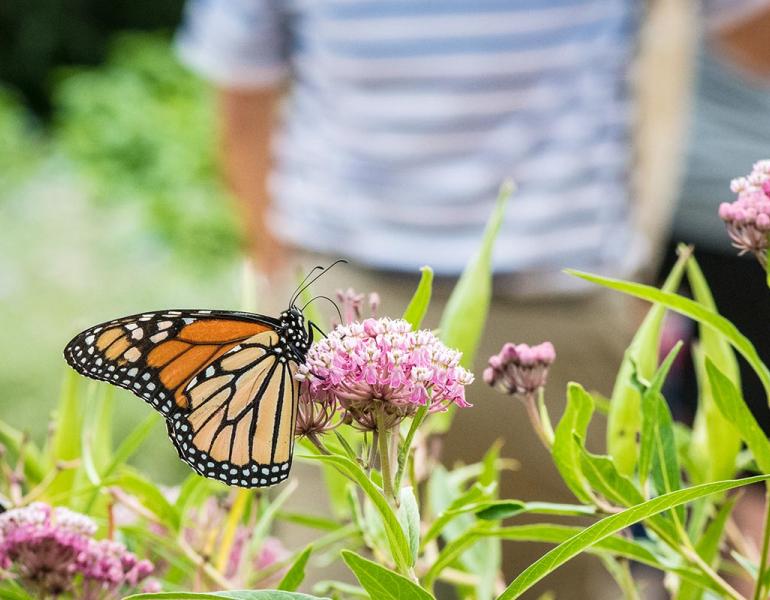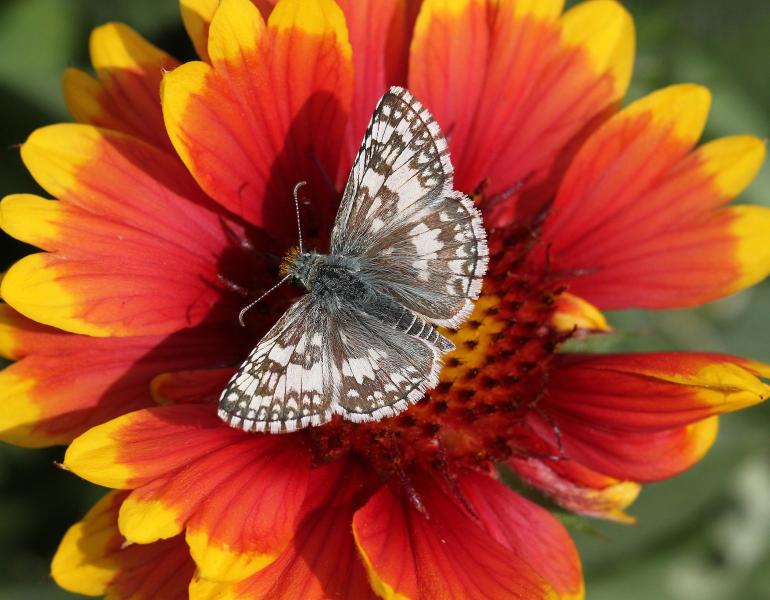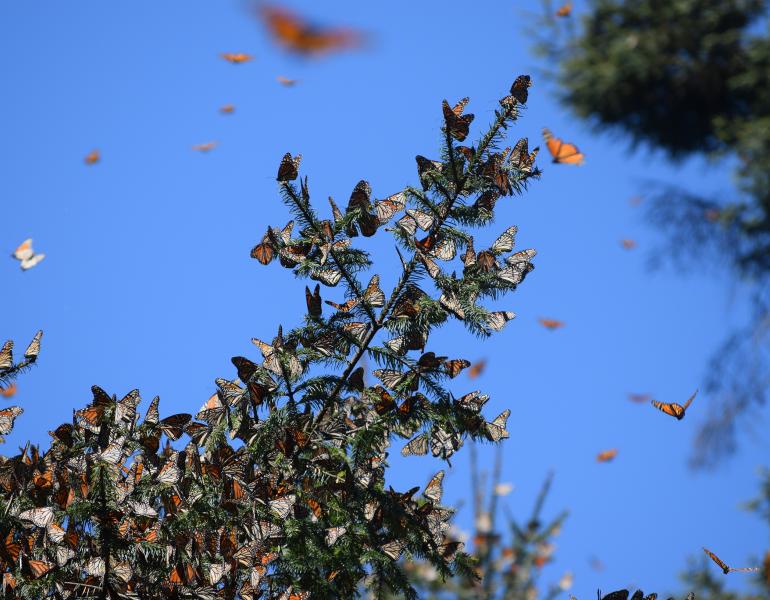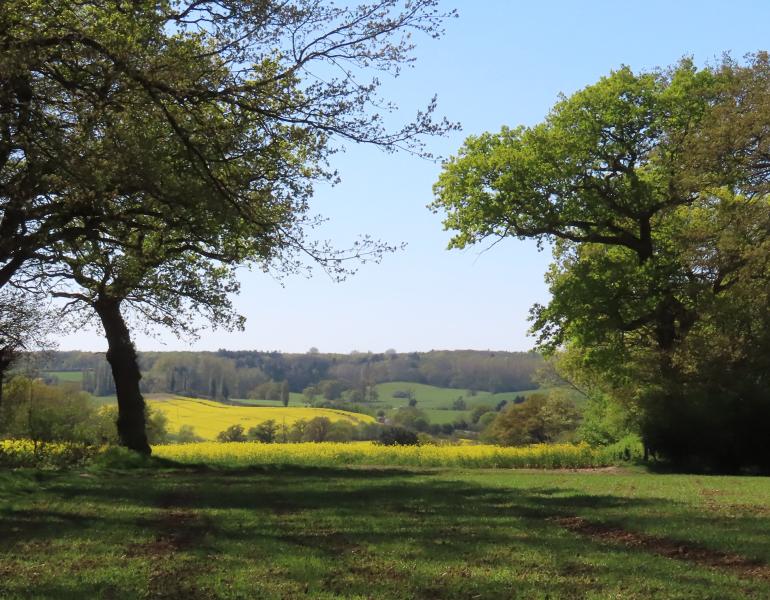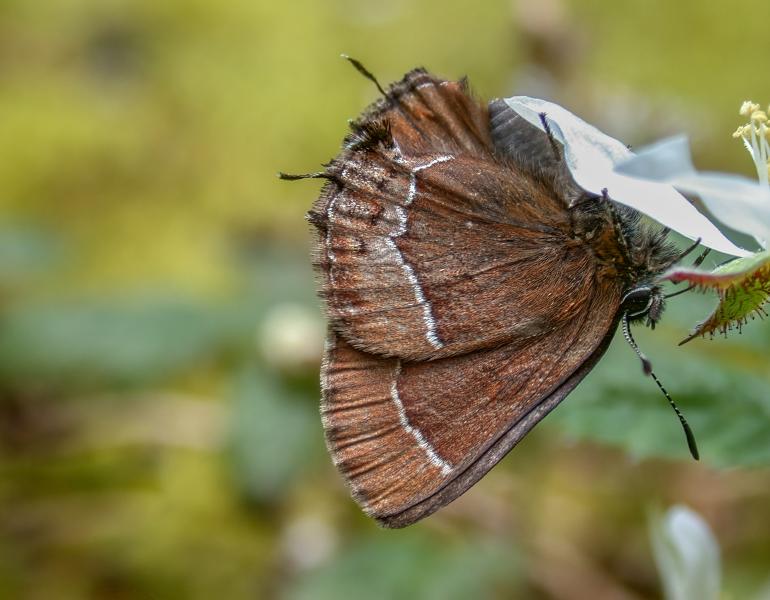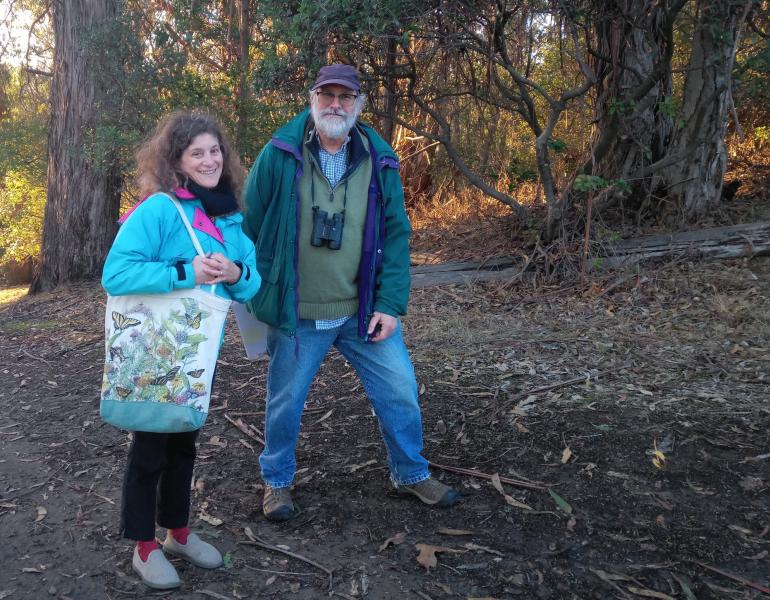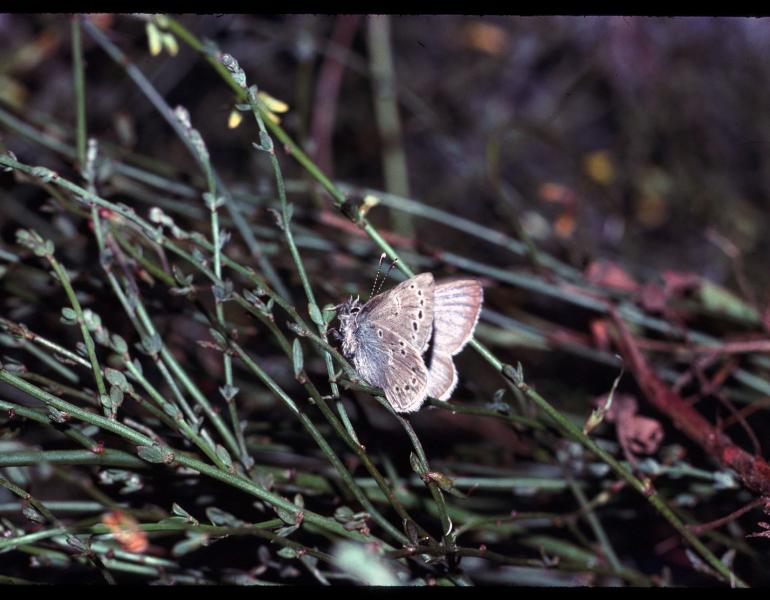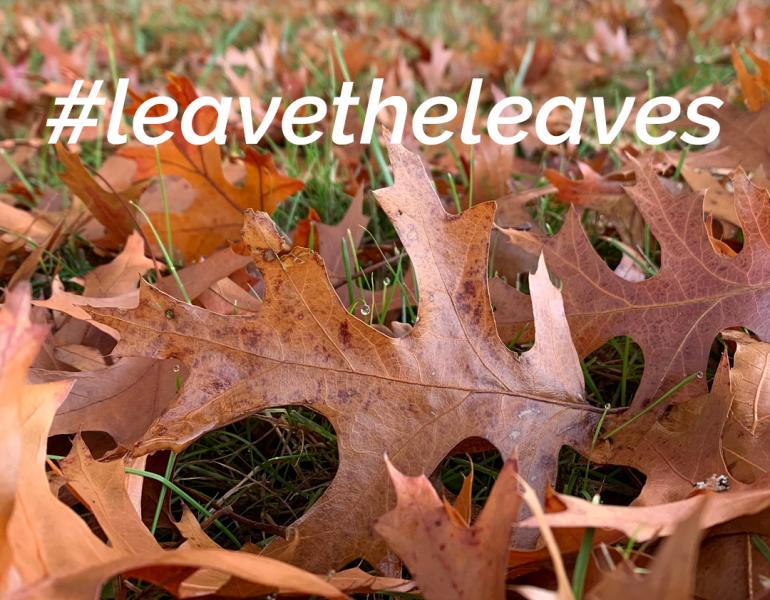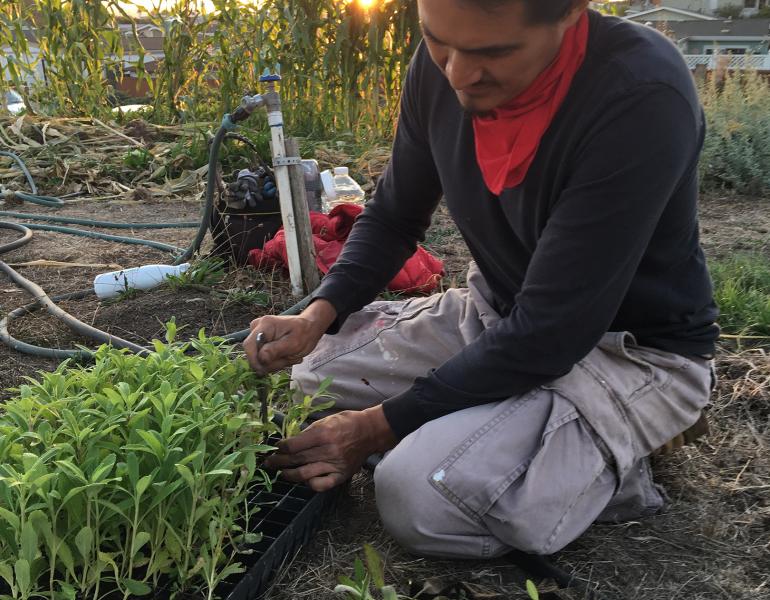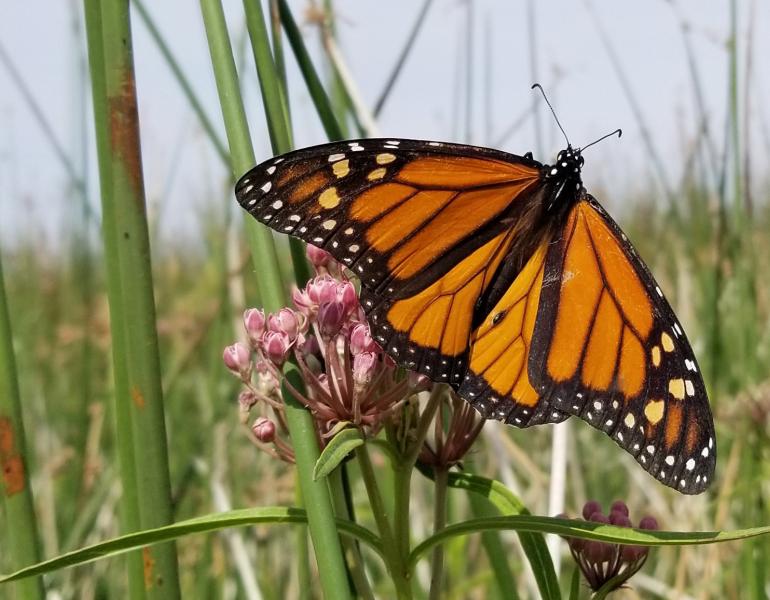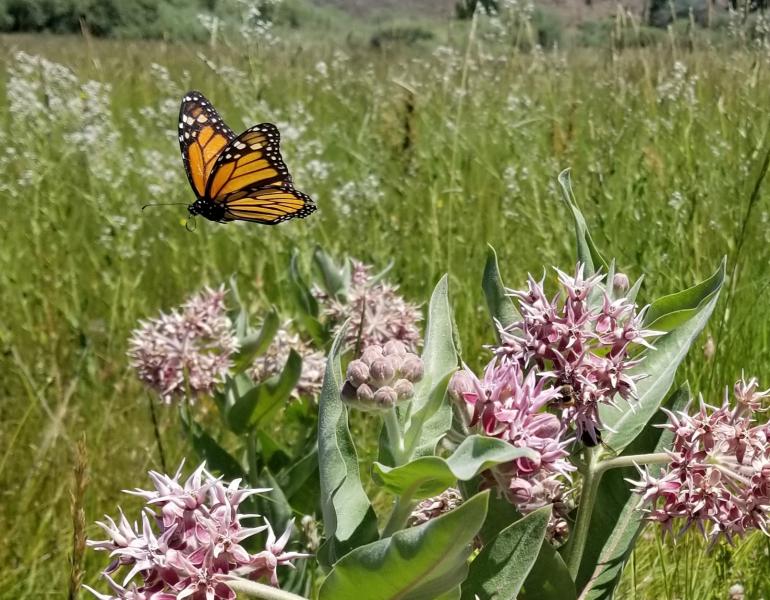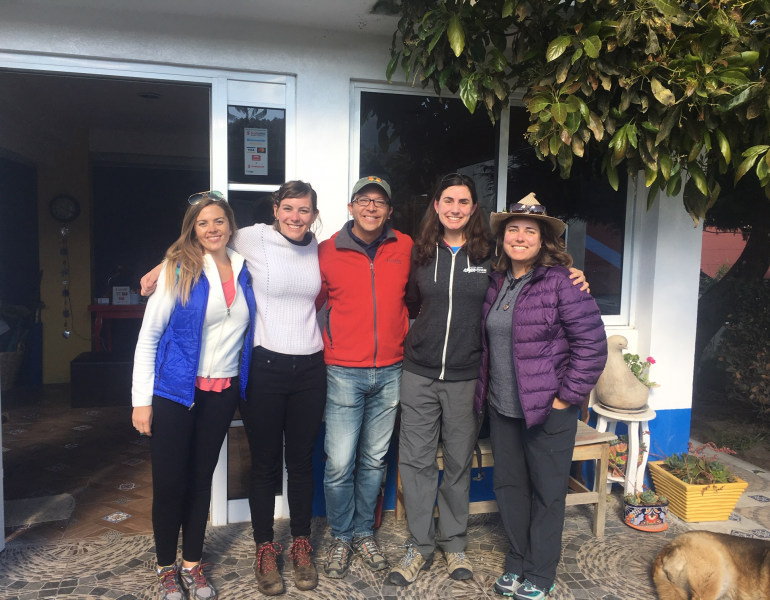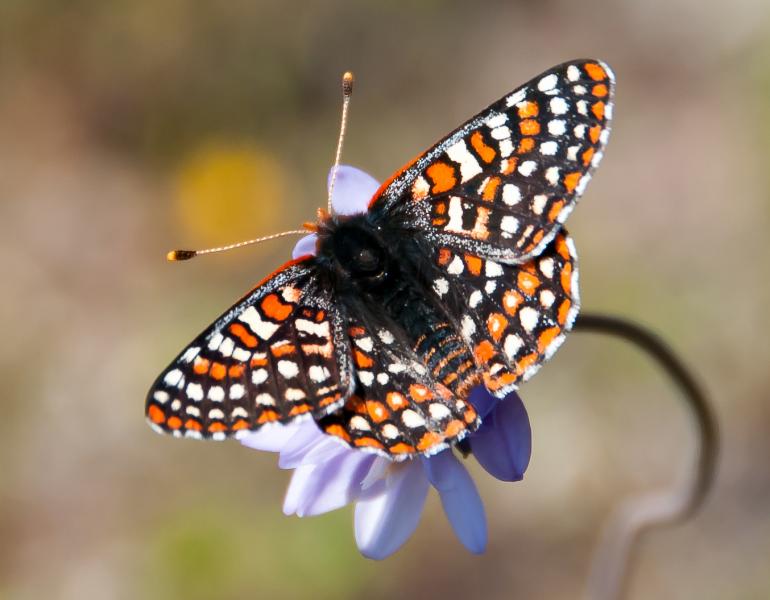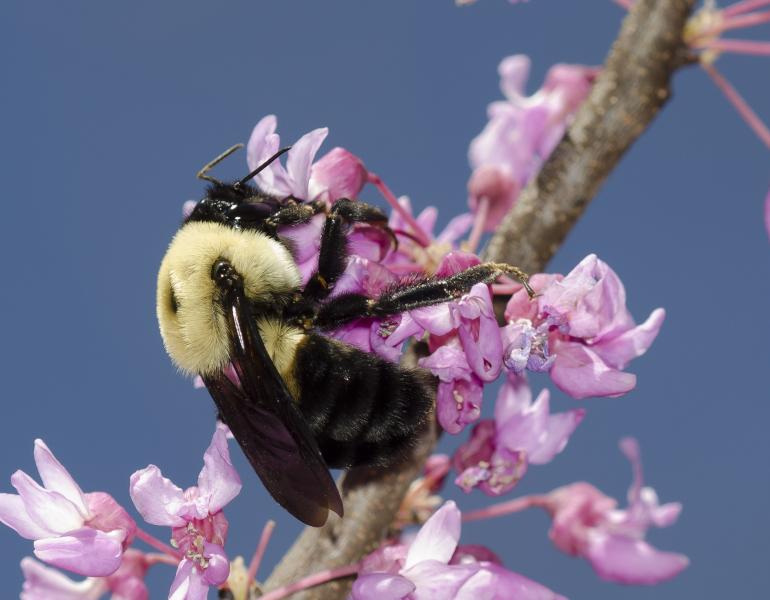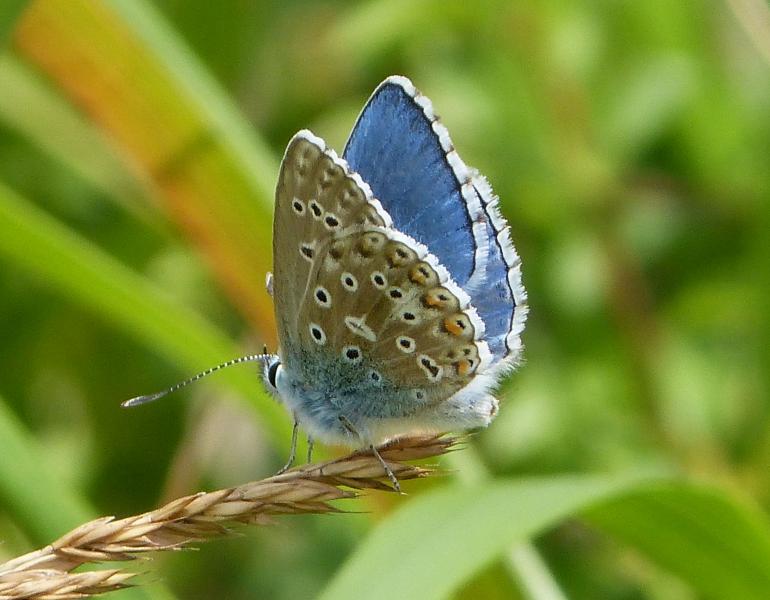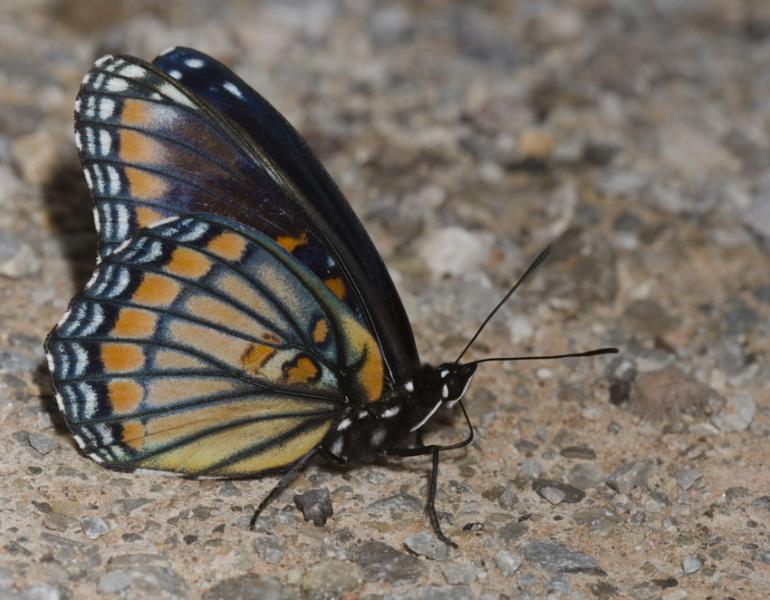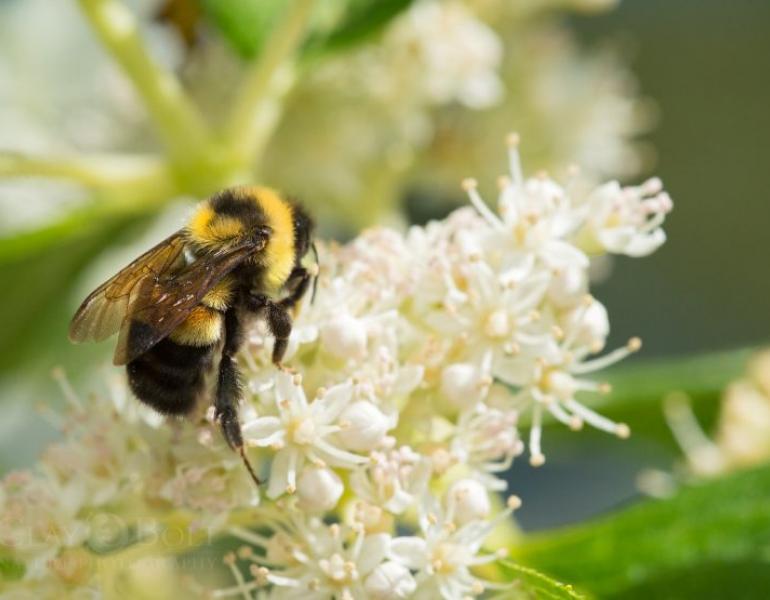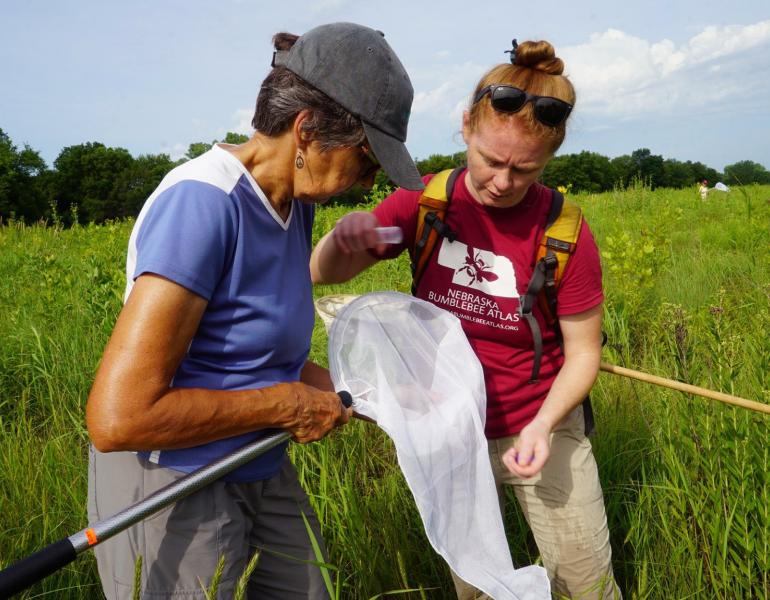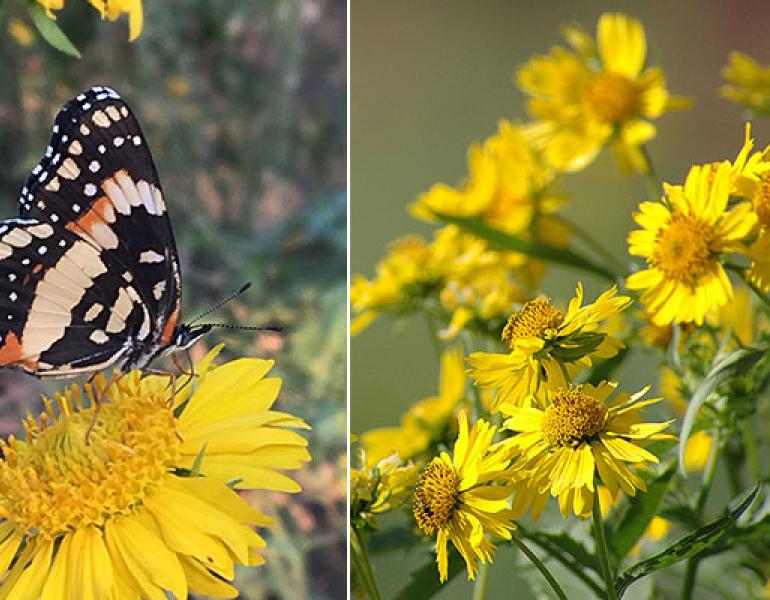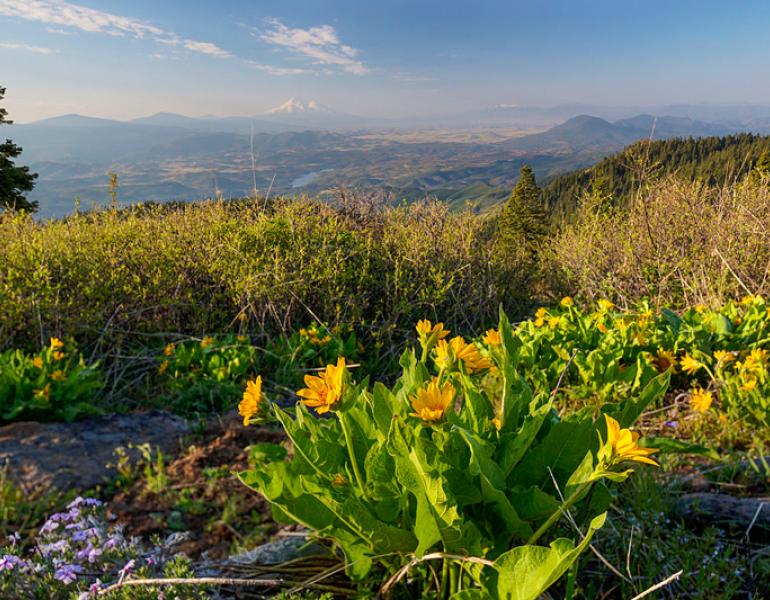Monarch butterflies are famous for their colors and impressive migration. But they don’t all migrate in the same way! Discover what makes the eastern monarch population special.
Butterflies
Searching for Rare Butterflies on the Oregon and California Coasts
In the hopeful early summer, Xerces conservation biologists set out on a journey down the coast, under forests, through marshes, and across sand dunes to find rare butterfly species in the wild.
Protecting New Mexico's Very Hungry Caterpillars
There is a lot to celebrate in New Mexico during Pollinator Week, literally: it is home to some of the greatest diversity of bees and butterflies in the United States. New Mexico hosts about 40% of all butterfly species and a quarter of all of the bee species found in the US (approximately 300 and 1,000 species, respectively). Emily Ruth Spindler shares how Xerces' work is expanding to protect the state's priceless invertebrate biodiversity.
Grassroots Conservation is the Key to Saving Imperiled Western Butterflies
Home grown insect enthusiasts have always provided valuable information to scientists about the ecology and health of invertebrate populations. It is often “amateur” lepidopterists who track rare subspecies, discover new populations, keep local natural history notes, or raise the alarm when butterfly populations are threatened. Today more than ever before, grassroots science and conservation are the key to saving our imperiled western butterflies.
Announcing the 2022 DeWind Awardees
Every spring, the Xerces Society gives out at least two awards for students engaged in research related to Lepidoptera conservation, made possible through the Joan Mosenthal DeWind Awards program. This year, we are thrilled to announce our two awardees, both of whom are PhD candidates: Chris Cosma of University of California-Riverside and Brendan Carson of Tufts University.
Western Monarch Thanksgiving Count tallies nearly 250,000 butterflies
The Xerces Society’s Western Monarch Thanksgiving Count celebrates its 25th year of community science with a surprising and remarkable outcome: 247,237 monarch butterflies observed across western overwintering sites, an over 100-fold increase from last year.
Announcing the 2021 DeWind Award Winners
The DeWind Awards are given annually to students engaged in research related to butterfly or moth conservation. The 2021 winners are Wendy Valencia-Montoya and Chris Halsch.
Monarch Numbers from Mexico Point to Declining Population
Surveys of monarch butterflies overwintering in central Mexico by World Wildlife Fund–Mexico found that the butterflies occupied an estimated 2.1 hectares of forest during the winter of 2020–21, approximately 26% less than the previous winter. Scientists estimate that 6 hectares are necessary to sustain the population.
England’s Ancient Woodlands: Living Time Capsules
To many people, the roar of a chainsaw is a sound of alarm, not conservation. But for England’s surviving ancient woodlands, the chainsaw has become a valuable tool.
In Search of the Elusive Johnson’s Hairstreak
Old-growth forests are not exactly the habitat that comes to mind when you think of butterflies, but Johnson’s hairstreak calls these habitats home. It lives in the treetops, its larvae munching away at sprigs of mistletoe.
Remembering Bill Shepard, a Great Friend of Butterflies
Bill Shepard dedicated his life to helping butterflies. He participated in many annual counts across California as well as the Western monarch Thanksgiving Count. An educator by profession, he also fostered future generations of butterfly enthusiasts.
Xerces Turns Fifty: A Half Century of Ground-Breaking Conservation
This is a landmark year for the Xerces Society: 2021 is our 50th anniversary! The Xerces Society was founded in 1971 by Robert Michael Pyle and has grown from a volunteer-run group to an internationally respected organization and a trusted source of science-based information and advice.
Leave the Leaves to Benefit Wildlife
For many people fall cleanup means cutting all the seed heads and stems off the flowers and raking up all of the leaves. This tidiness may look nice to us, but it is not good for all of the small creatures that live in and around your property. #leavetheleaves
Mitigating the Effects of Climate Change On Grassland Butterflies
Grasslands provide important habitat for a range of butterflies, some of which rely on these open sunny habitats for survival. Climate change adds an extra layer of threat and concern.
Supporting Community Efforts to Create Monarch and Pollinator Habitat in California
Creating habitat in California is an essential step in recovering the monarch -- as well as to support the many other species of butterflies and bees in that state. Xerces worked with local native plant nurseries to create and distribute monarch and pollinator “habitat kits”, each with more than a thousand climate-smart, locally native plants -- enough to make a lasting impact for monarchs.
Migrating Murals
Ink Dwell studio launched the Migrating Mural project in 2012 to celebrate animals that migrate, creating impossible-to-ignore artworks as monuments to the wonders of the natural world.
Tracking Butterfly Populations through Community Science
Last year, the Xerces Society partnered with the Cascade-Siskiyou National Monument to launchthe Cascade-Siskiyou Butterfly Monitoring Network. Though the 2020 field season is facing uncertainty, there are still ways for you to get involved with butterfly research where you live.
Announcing the 2020 DeWind Awardees
In the midst of so much uncertainty, Xerces is heartened to continue our annual grant program—the Joan Mosenthal DeWind Award for student research into Lepidoptera (butterfly and moth) conservation. This year, we are thrilled to award three students research grants: Douglas Boyes, Jayme Lewthwaite, and Max Ferlauto.
Western Monarchs: Notes from the Field
Staff from the Xerces Society and our partners have been keeping close eyes on the imperiled western monarch population at study sites in California, Nevada, Oregon, Washington, and Idaho as part of a multi-year collaborative research project.
Fun with Harvester Butterflies, Part Two
Recently, photographer and Xerces Society member Bryan E. Reynolds earned a long-sought set of photos of the elusive harvester butterfly, North America’s only carnivorous butterfly.
Announcing the 2019 DeWind Awardees
The Xerces Society is happy to announce the 2019 DeWind awardees: Niranjana Krishnan, a PhD candidate at Iowa State University, and Molly Wiebush, a master’s student at Florida State University.
Community Scientists Can Help Support Imperiled Western Monarchs
While hiking in California and the rest of the West, you can help researchers by submitting any and all monarch and milkweed observations this year to the Western Monarch Milkweed Mapper website.
Photo Essay: Trinational Monarch Meeting and Exploring Mexico’s Monarch Overwintering Sites
Xerces Society Endangered Species Conservation Biologist and Western Monarch Lead Emma Pelton recounts her recent experience in Mexico with this photo essay.
National Butterfly Center Gets Reprieve—But Border Wall Will Impact Much More
There are many reasons to oppose the wall along the southern border—including the loss of habitat for some of our smallest and most important animals.
New Year’s Count of Western Monarchs Confirms Decline, Trends Seen in Previous Years
Overall, the count data revealed an average decrease of 38% between the Thanksgiving and New Year’s counts.
A Shifting Climate Creates Winners and Losers
We are already observing impacts on some species that are emerging earlier or whose distributions are changing, but it is difficult to characterize how insects as a whole will be impacted: some species will benefit while most will lose out.
The Striking Beauty of Oklahoma’s Butterflies
Oklahoma’s impressive butterfly fauna of more than 170 species includes the nation’s largest and the smallest, and representatives of all six major butterfly families.
Ups and Downs of English Chalk Grasslands
About a third of Britain’s sixty resident butterfly species may be encountered on chalk grasslands, but it is a handful of blues—common, chalkhill, small, and Adonis—that may be most characteristic of this habitat.
My First Hybrid: Limenitis archippus archippus × Limenitis arthemis astyanax
Photographer Bryan E. Reynolds encountered a rare hybrid of two of his favorite butterfly species—a well-deserved sighting for a passionate lepidopterist!
Can Robobees Solve the Pollination Crisis?
Focusing solely on crop pollination and failing to take the pollination of native plants into account may well lead to a deterioration in the plant communities that make up the very fabric of our environment.
The Endangered Species Act Needs Your Help!
The Endangered Species Act is our nation’s most effective law for protecting animals and plants in danger of extinction, and it has prevented 99% of listed species from going extinct. We need your voice to help defend this crucial law.
Unblinded by Science
As the anniversary of the March for Science approaches, we reflect on ways science has informed our conservation efforts over the past year.
Autumn Pollinators in Oklahoma
The late season is a flurry of pollinator activity in the Sooner State.
Don’t Downsize the Cascade-Siskiyou National Monument
The Cascade-Siskiyou National Monument is unique among the BLM’s National Conservation Lands in that it is one of the most biologically diverse places in North America.
The Crystal Skipper: North Carolina’s Newest Butterfly Species
Last week, a butterfly found along the North Carolina coast was officially named as a new species.


